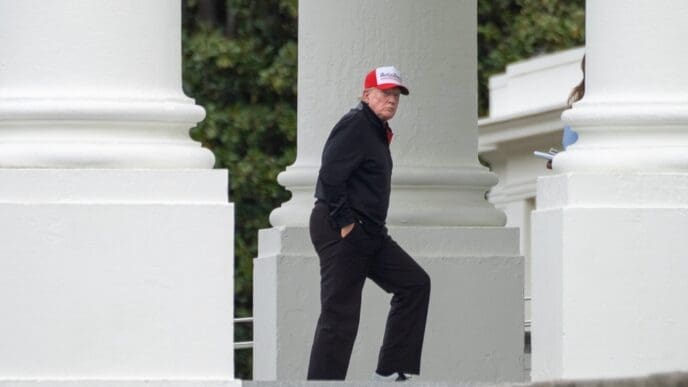The Supreme Court delivered a pivotal 5-4 decision on Monday night, overturning a district court’s ruling that had blocked President Donald Trump’s attempt to utilize the Alien Enemies Act, a 227-year-old statute, for deporting individuals without due process. The judges largely voted along party lines; however, Justice Amy Coney Barrett, a Republican, dissented alongside the three Democratic justices.
While this decision marks a significant win for Trump, it does not constitute an outright victory. The Court refrained from opining on whether the Alien Enemies Act indeed authorizes such deportations. It mandates that individuals must receive “notice and an opportunity to challenge their removal” before deportation under this law can occur. This ruling enables the resumption of deportations previously halted by Judge James Boasberg’s injunction.
The decision introduces a requirement for those targeted by Trump’s administration to initiate a “habeas” proceeding. This legal process traditionally allows a single individual to challenge their government detention, indicating that judicial intervention in deportations will occur on a case-by-case basis. Justice Sonia Sotomayor’s dissent highlights the potential consequences, noting that individuals lacking legal representation or who cannot promptly appeal adverse judgments could face removal to dangerous environments, such as the Center for Terrorism Confinement in El Salvador, notorious for severe human rights abuses.
The Trump administration has transferred detainees intended for deportation under the Alien Enemies Act to Texas, falling within the jurisdiction of the Fifth Circuit Court of Appeals, known for its conservative leanings. Should a habeas suit be pursued in this jurisdiction and subsequently appealed, the Fifth Circuit might establish a precedent potentially undermining future habeas challenges to these deportations.
The Supreme Court’s decision in the J.G.G. case rests on contentious legal grounds. Although habeas is the proper channel for detainees contesting government detention, the individuals involved in J.G.G. contest the government’s deportation authority under the Alien Enemies Act, not the detention itself. Previous Court rulings, such as in Skinner v. Switzer (2011), have not recognized habeas as the sole or even viable remedy where the sought relief does not terminate or alter custody conditions.
Furthermore, the Supreme Court has yet to address whether the Alien Enemies Act permits Trump to deport individuals. Historically, the Act has been employed only thrice, targeting citizens of countries at war with or invading the United States. As the U.S. is neither engaged in war nor under invasion, current law suggests the Act’s applicability is limited. Nevertheless, the Court may soon face this question if the Fifth Circuit denies relief, prompting affected individuals to seek Supreme Court intervention.
The case offers a glimmer of hope, as all justices concur that those Trump aims to deport must be allowed to secure legal representation and contest their deportation. However, this opportunity may hold little weight while cases remain within the Fifth Circuit’s purview.
Beyond the Surface
- The Supreme Court’s decision signals a potential increase in deportations under historic legislation, impacting immigrant communities who may face expedited removal without comprehensive legal recourse.
- Legal professionals may experience heightened demand as individuals targeted for deportation seek representation to navigate complex habeas proceedings.
- Communities in jurisdictions like Texas may witness increased legal activity and community advocacy efforts as a result of the ruling.
- The decision underscores the evolving judicial interpretations concerning immigration laws, with significant implications for future legislative and executive actions.
- Civil rights organizations may intensify efforts to challenge and scrutinize the application of the Alien Enemies Act, potentially influencing broader immigration policy discussions.














